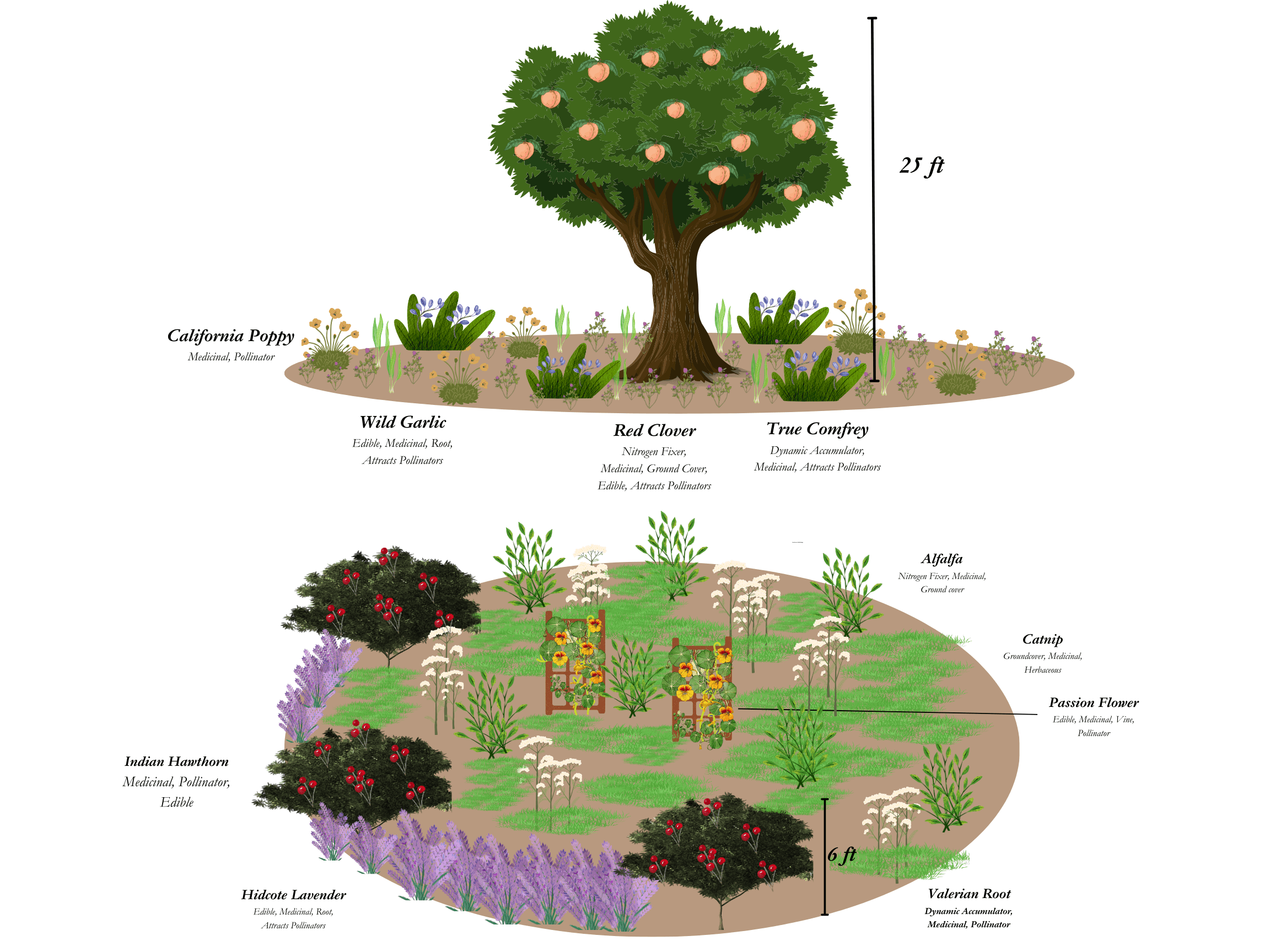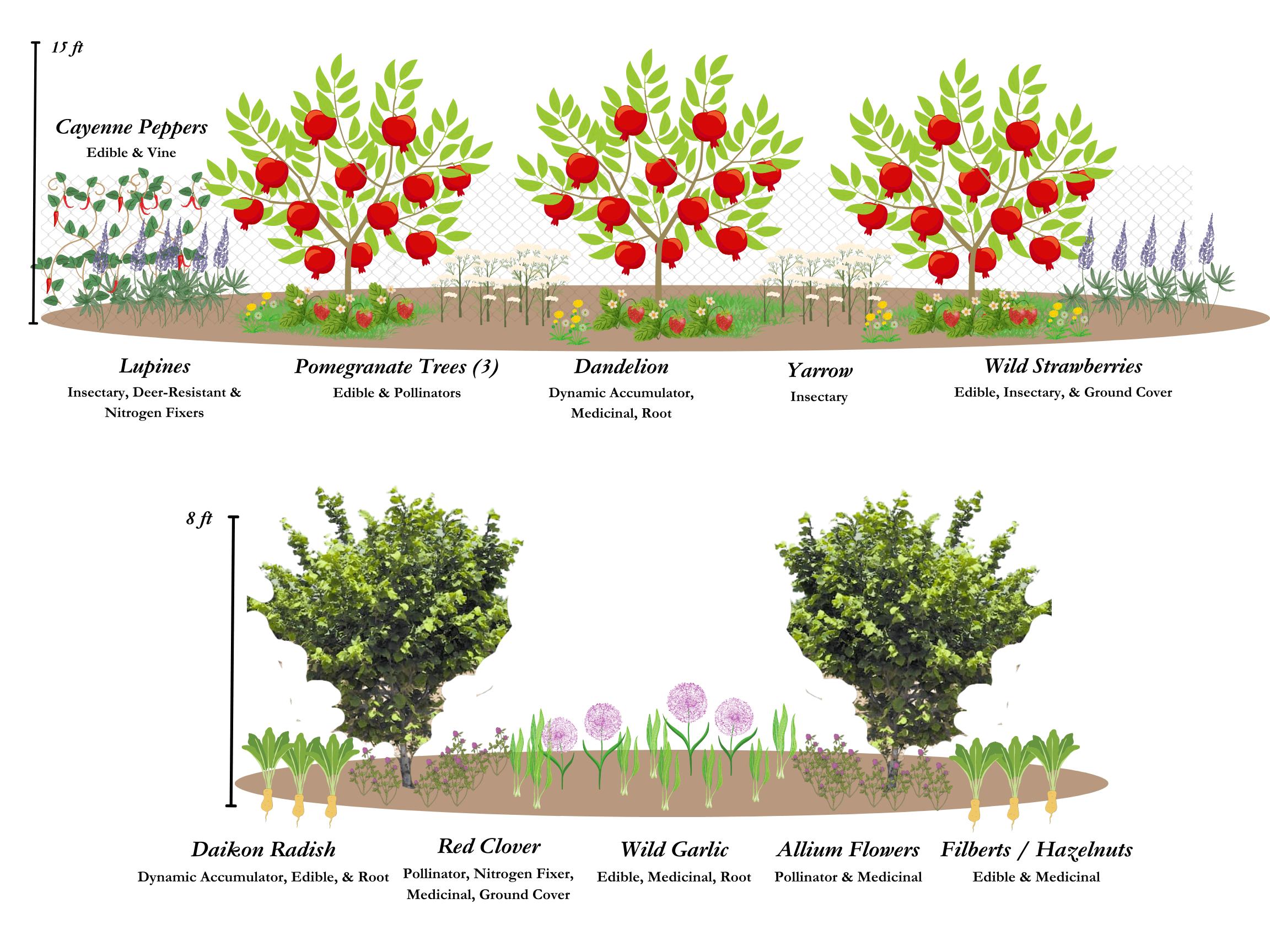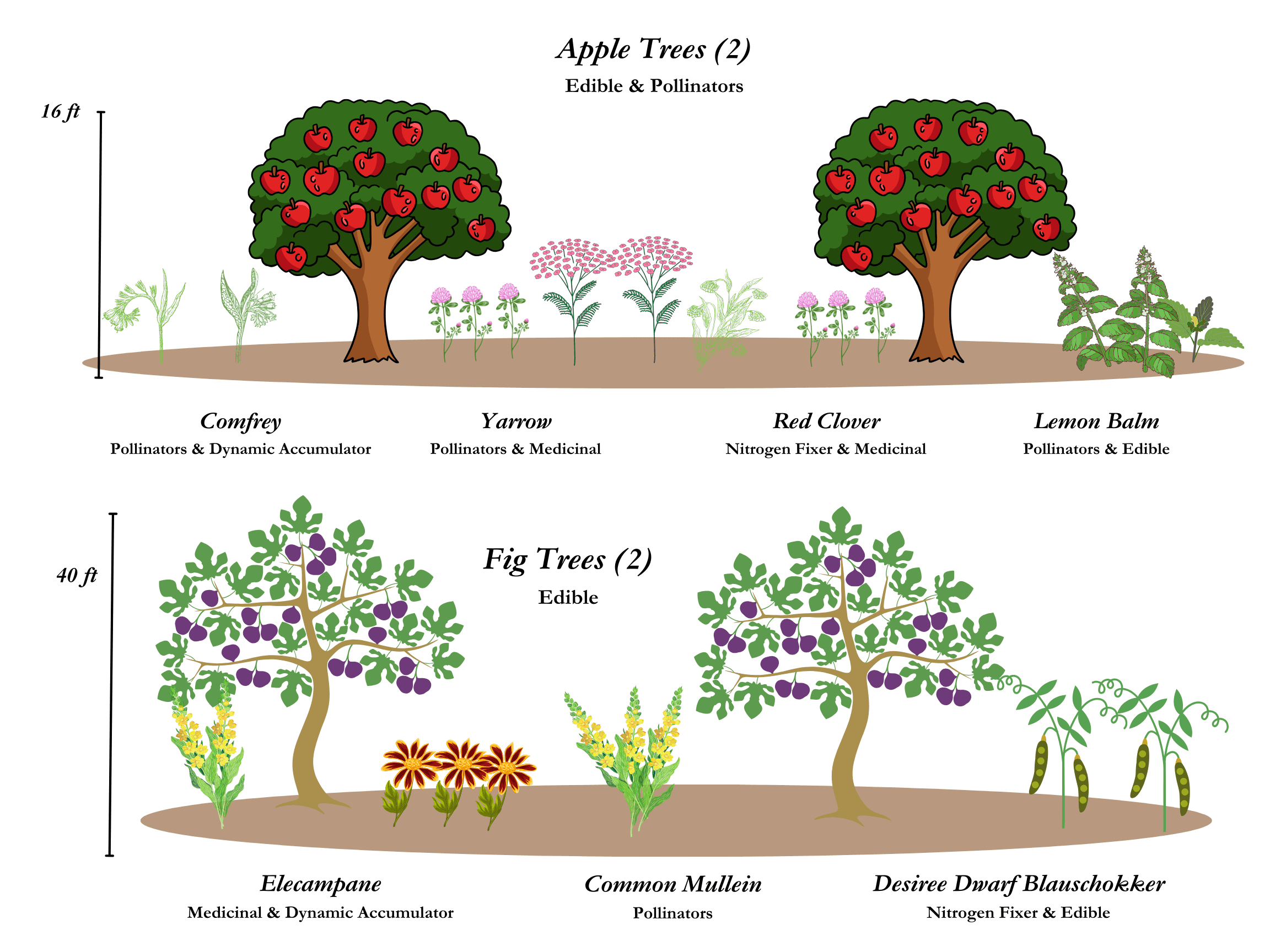What is a Food Forest?
A food forest is a way of growing that replicates how the Earth grows food naturally (in relationship to the whole). They have been cultivated by Indigenous folks around the world for millennia and are used today to restore neglected land. Food forests are an intentional planning of planting that creates an environment of mutual thriving that is dependent on understanding and cultivating relationships between the elements that make up a local ecosystem. They provide food, medicine, fiber and more!
An aerial view of a food forest designed by Kiya Leakes, Janine Peñafort & Sydney Searchwell-Simpson. Each guild which makes up this food forest is used as an example below.
What makes up a food forest?
Food forests are typically made up of multiple layers. They include a:
Tall Tree Layer
Lower Tree Layer
Shrub Layer
Vine Layer
Ground Cover Layer
Root Layer
Herbaceous Layer
An example of two guilds and its layers designed to serve the nervous system. These guilds were designed by Sydney Searchwell-Simpson
Food forests are made up of guilds which act as the building blocks of food forests.
If you choose our food forest option, you will receive a singular guild which can create a system of support around a singular tree.
Guilds typically include:
Insectary/Pollinator: brings in supportive insects, birds and other pollinators
Nitrogen Fixers: plants that add nitrogen to the soil. They enrich the soil for the present and the future.
Dynamic Accumulator: bring up nutrients from the soil (often through a deep taproot) and share it with the plants around them. They infiltrate water by breaking up compacted soil and share through fungal networks and decomposition.
Edible: any edible plants
Medicinal: plants that provide medicine
Vine Layer: a layer that climbs up the main tree or a trellis. This maximizes the usage of space.
An example of two guilds that stacks functions. These guilds blood cleansing & building guilds were designed by Janine Peñafort
An example of two guilds that stack functions without being crowded. These respiratory health guilds were designed by Kiya Leakes.



